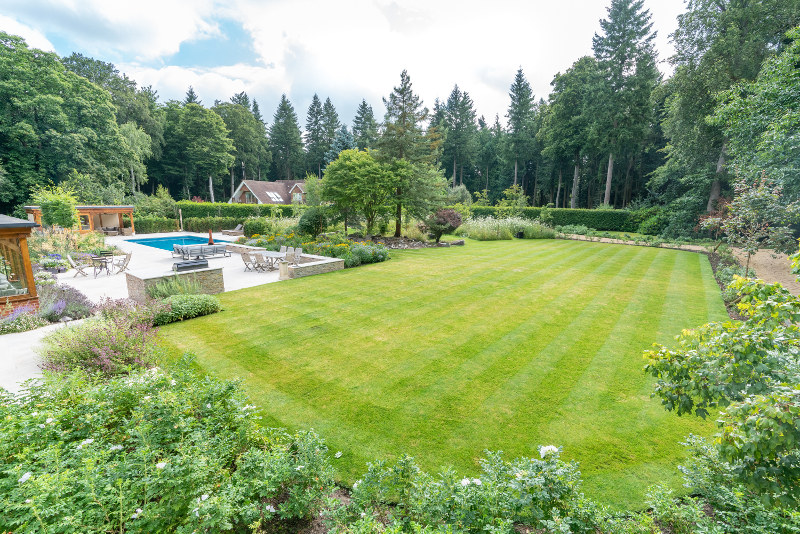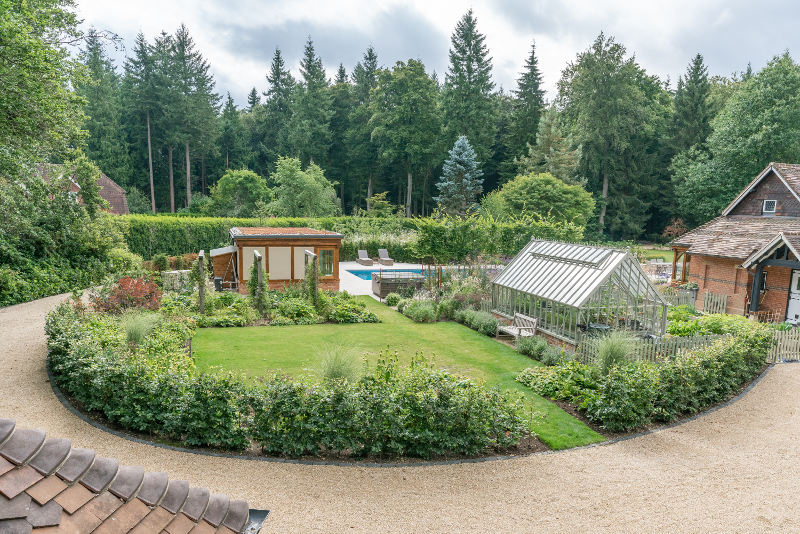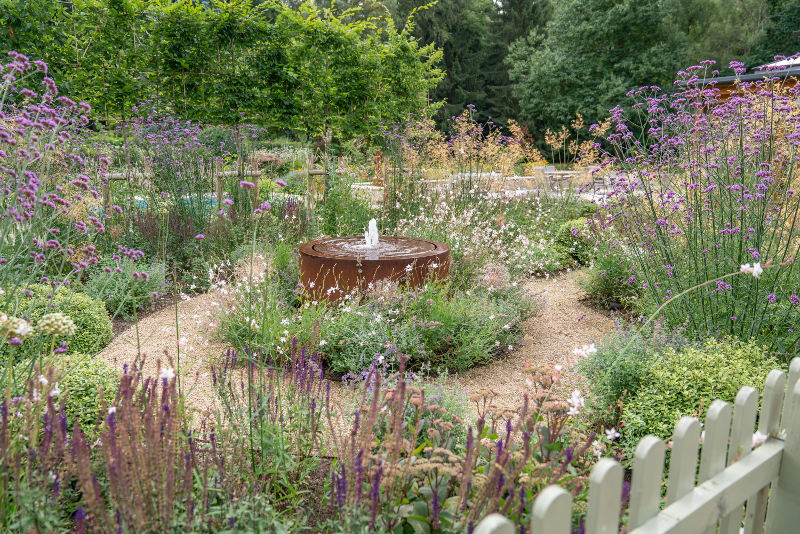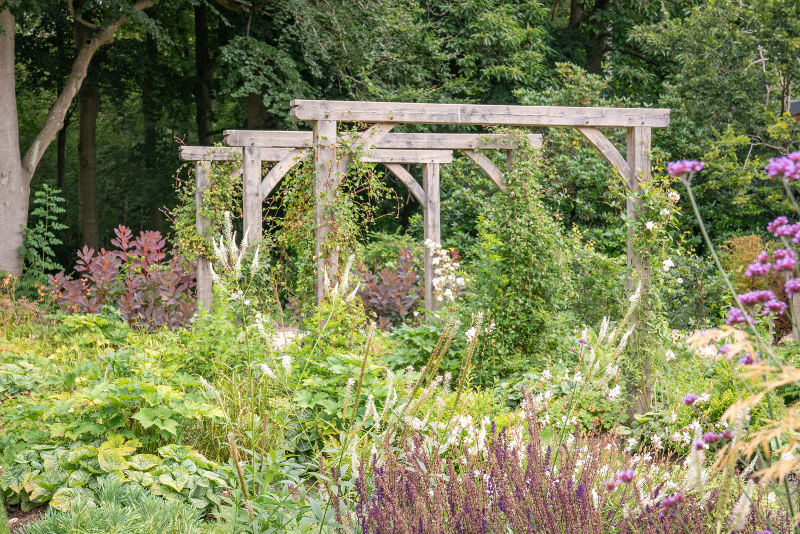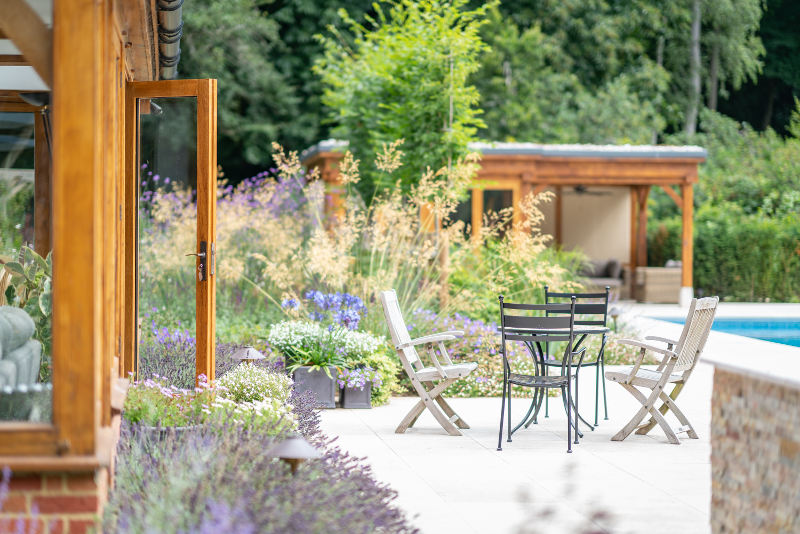Nothing gives our team more pleasure that transforming a sprawling garden into an elegant and harmonious haven. Once we’ve planted the last plant, tidied away the last of our tools and applied the finishing touches, the ‘wow’ reaction we receive from clients as they admire the result is priceless.
But before starting on the path to a gorgeous new garden, we like to make sure our clients are aware of what’s involved. After all it’s a significant investment of time and resource that’s required.
So, if you’re thinking of taking the next step to make your garden dreams a reality, here’s what to expect from the process.
The people involved in a large garden transformation
Getting advice and help from professionals who’ve done it all before will make sure your garden project runs smoothly.
In the case of a large garden transformation, you’ll need the complementary skills of a garden designer and a garden landscaper. Working together they’ll deliver results that are as beautiful as they are functional and meet the needs of your brief.
They often get confused with one another but each has a very specific role.
Garden Designer
The designer is responsible for the creative and conceptual aspects of transforming a garden. They provide a design service that turn your ideas into a physical plan of what you want.
They work closely with you to understand your preferences, goals, and requirements for the space. Then considering factors like the size and shape of the garden, any existing features and the environmental conditions they produce a design.
This design details the garden layout, selection of suitable plants and materials, as well as specific features like walkways, water features or outdoor living areas. All these aspects come together in detailed plan and/or 3D renderings to help you visualise the end result.
Garden Landscaper
A garden landscaper is then appointed (or recommended) by a garden designer whose job it is to turn this plan into a reality.
Working closely with one another, the landscaper brings the garden design to life through the practical process of redefining and shaping the space.
The transformation process
Landscaping is a complex process involving a good dose of hard graft alongside a wide range skills and knowledge needed to safely carry out essential tasks like excavation, planting, irrigation and construction.
It starts with first assessing the space against the design to consider the following important elements:
Site analysis: the physical characteristics of the site, such as topography, soil, vegetation and climate that might influence choice of hard landscaping materials or limit use of the area.
Functionality: the intended use for the space such as relaxation, entertainment, cooking or playing sport, and whether adequate provisions has been made for power, lighting, safety etc.
Users: are there specific needs of those using the space. Will children need somewhere safe for them to play. Are there any mobility issues which necessitate wider paths to accommodate wheelchairs.
Spatial organisation: is the space well-organised with a sense of order and structure while also allowing for flexibility and adaptability.
Sustainability: can sustainable design practices be adopted, such as water conservation, use of native plants, and minimal use of pesticides and fertilisers, to create an environmentally responsible garden.
Plant selection: is the plant selection suitable for the characteristics of the site, the intended use of the space and the desired aesthetic.
Hardscaping: what materials are needed for building hardscaping elements such as patios, walkways, retaining walls and water features.
Lighting: what is needed to create ambiance, illuminate safe routes around the garden, highlight features and provide security.
Power: where around the garden does power need installing to ensure a sufficient supply for garden lighting, water features, garden tools, irrigation systems, entertainment systems and outdoor kitchen equipment.
Irrigation: what irrigation systems are needed to capture and conserve water, drain water away from areas that could become waterlogged and to automatically keep plants well watered.
Maintenance: how easy is the garden to maintain based on plant selection and pruning requirements.
Then follows a detailed plan and schedule of activity to co-ordinate what needs to happen and by when. This ensure materials are sourced, ordered and available on site at the correct time. And that other contractors like electricians and plumbers are booked in advance to turn up when needed.
Once the plan is in place next comes the task of physically transforming the space. This begins with hard landscaping.
Hard landscaping
Hard landscaping covers the work of building the features that divide and define the garden, creating boundaries and foundations for features. This includes clearing the garden, digging out the structure then building paths, walls, and patios. Installing fencing and building features like ponds, water features, pergolas or outdoor kitchens. As well as overseeing the work of sub-contractors appointed to install outdoor lighting and other garden features.
Soft landscaping
Once the hard landscaping is complete the soft landscaping starts. This involves planting grass, flowers, shrubs and trees to bring colour and life to the garden.
By the end of the process, a stunning outdoor space emerges that meets the needs and desires of the original design.
How long does it take?
From start to finish, the time it takes to transform a large garden can vary depending on a number of factors including:
- Size of the garden
- The desired features
- The budget
- Complexity of the design
In general, it can take anywhere from a few weeks for a small project to several months for a large one, given that everything runs smoothly.
But even the best laid plans can go astray and it’s not uncommon for complications to come up which cause delays to progress:
- Bad weather can make it difficult or impossible to work in the garden.
- A shortage or delay in supply of materials will halt the hard landscaping process.
- Shortages of skilled labour may affect timeframes.
- Changes to the design once work is underway can have a significant impact on delivering to a deadline.
- Budget running short can lead to additional time needed to reassess the plan to balance a reduction in costs with delivery of the project.
Before embarking on a large scale garden transformation, it’s good to have an appreciation of the time it’s going to take and potential complications so that you’re prepared for any delays that could arise.
A good landscaper will alert you in advance of any problems and the impact this will have on the delivery timeframe and budget so adjustments are made with your full support.
Is it worth the mud, sweat and tears?
When you’re looking out at your muddy site on a cold, wet day it can seem like your dream garden is a lifetime away.
But as anyone who’s been through it will agree, it’s well worth the short-term pain for the long term gain of a garden totally unique to you.
To help you get the most from it, here are just a few pieces of advice from the professionals:
- Make sure you have a design and plan in place before you start landscaping your garden. This will help you focus on what you want to achieve and act as a reminder of the garden that will be yours at the end.
- Get professional help and advice from the start. Designers and landscapers hold a wealth of experience and knowledge between them which allows them to throw some great ideas and suggestions into the mix to help you achieve a fantastic result.
- Transforming a large garden will take time. For the best results be patient and allow your team the time they need to complete the project to a professional standard.
- Landscaping your garden can be a fun and rewarding experience. Relax and enjoy the process as you watch the evolutionary process of a totally new garden emerging before your eyes.

